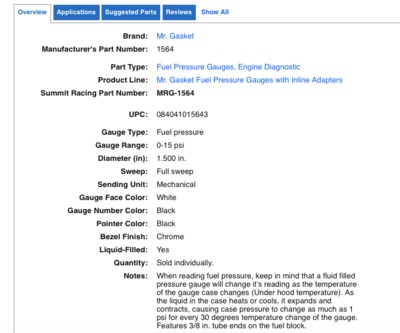Wietse
Well-Known Member
Same for me (starts at 5 psi then drops as engine is hot to close to 0 on the gauge) but thought from something I read that the liquid filled fuel pressure gauges will not show accurate pressure as temperatures change.
Liquid in the gauge (glycerine) is there to lubricate the mechanism and dampen gauge movement. Temperature does not effect accuracy on a gauge.

















